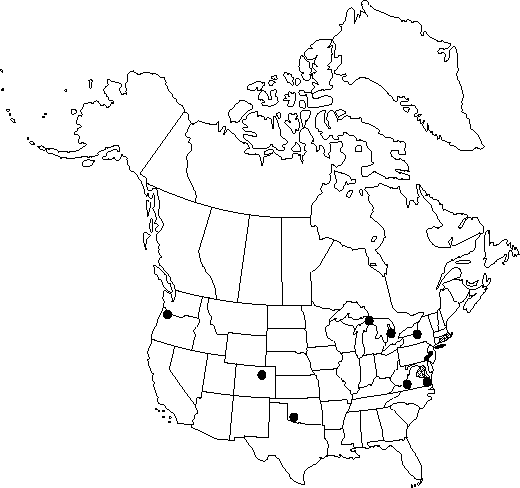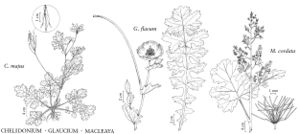Glaucium flavum
Stirp. Austr. Fasc. 2: 133. 1763.
Plants biennial or perennial, to 8 dm. Stems branching. Leaves to 30 cm; basal numerous, blade densely pubescent; basal and proximal cauline with blade lyrate, 7-9-lobed; distal with blade ovate, cordate, distinctly clasping stem; margins deeply dentate. Flowers: pedicels stout, to 4 cm; sepals 20-30 mm; petals yellow, sometimes orangish, sometimes with reddish to violet basal spot, obovate, 25-40 mm. Capsules sublinear, mostly distinctly curved, sometimes straight, to 30 cm, glabrous, tuberculate, or scabrous. 2n = 12.
Phenology: Flowering summer.
Habitat: Open sandy shores and flats, waste places, and on ballast
Elevation: 0-200 m
Distribution

Ont., Colo., Conn., Md., Mass., Mich., N.J., N.Y., Okla., Oreg., Pa., R.I., Va., Europe, sw Asia.
Discussion
Native from the Black Sea and Transcaucasus to coastal southern and western Europe, and also well established as a ruderal in central Europe, Glaucium flavum has spread far beyond that range as a ballast waif and occasional garden escape. It should be expected elsewhere in the flora.
Selected References
None.
